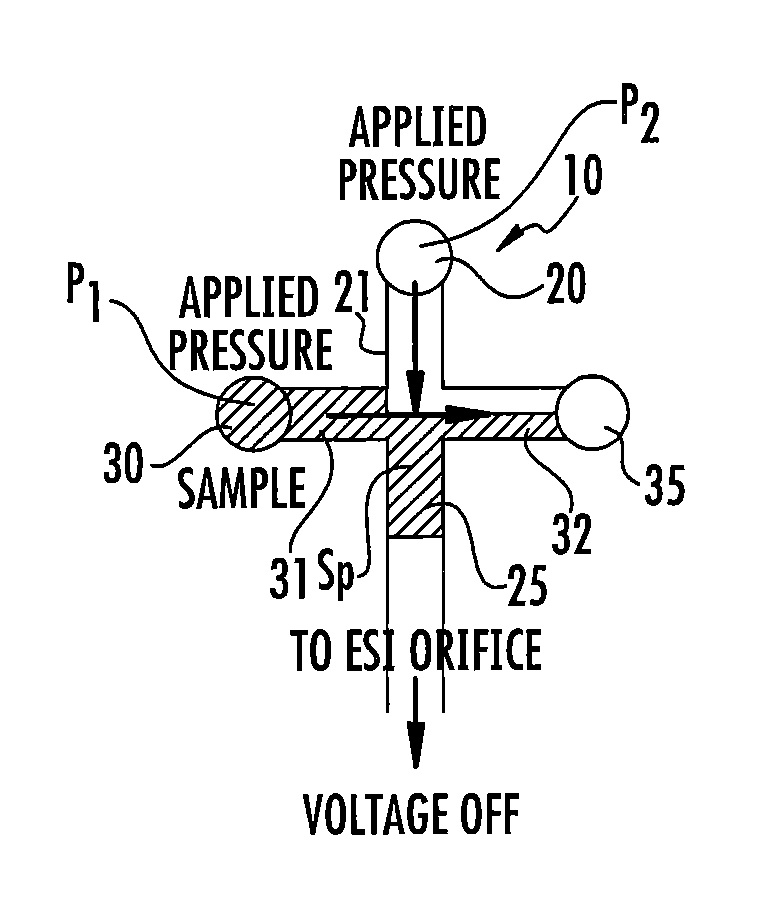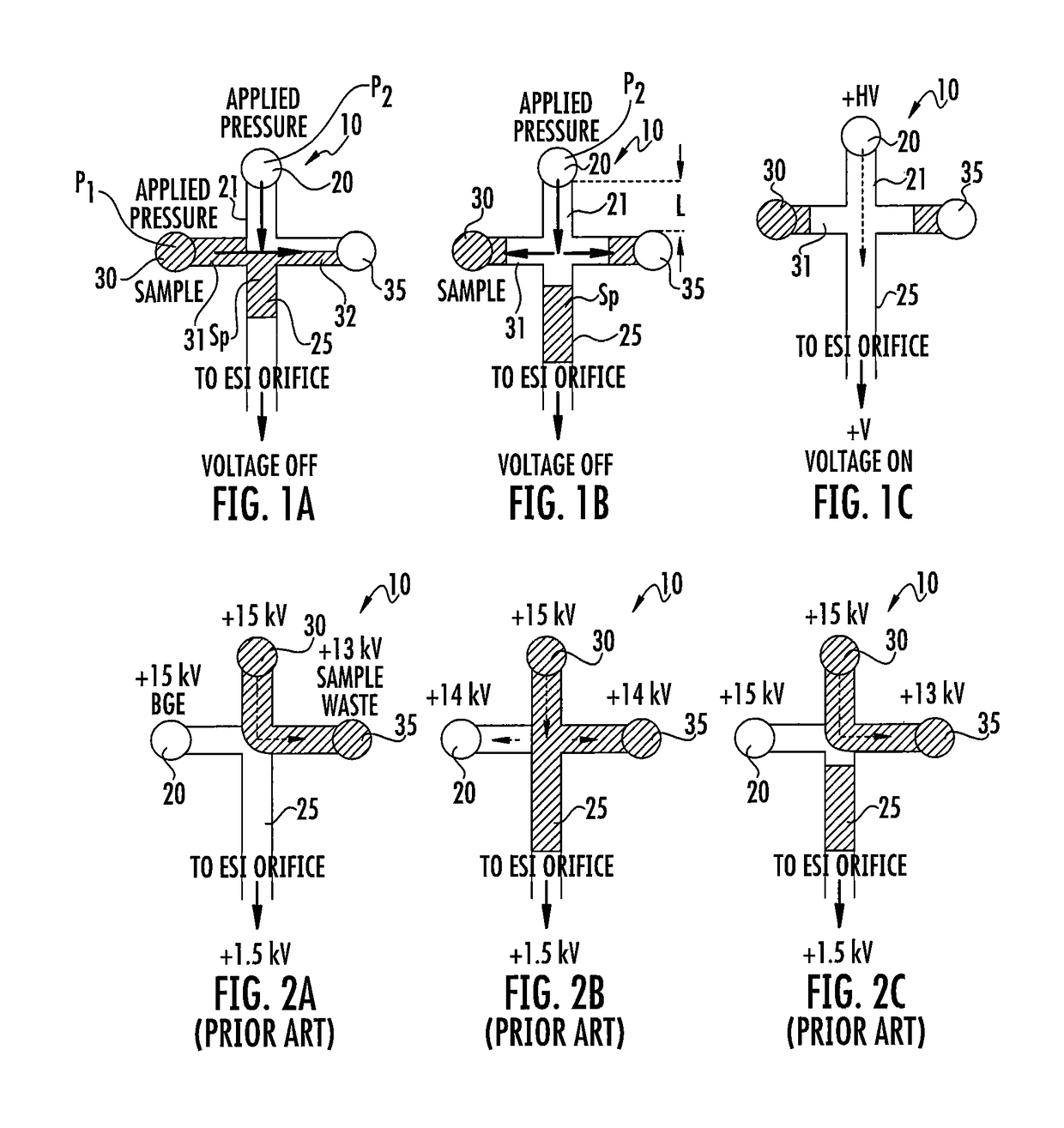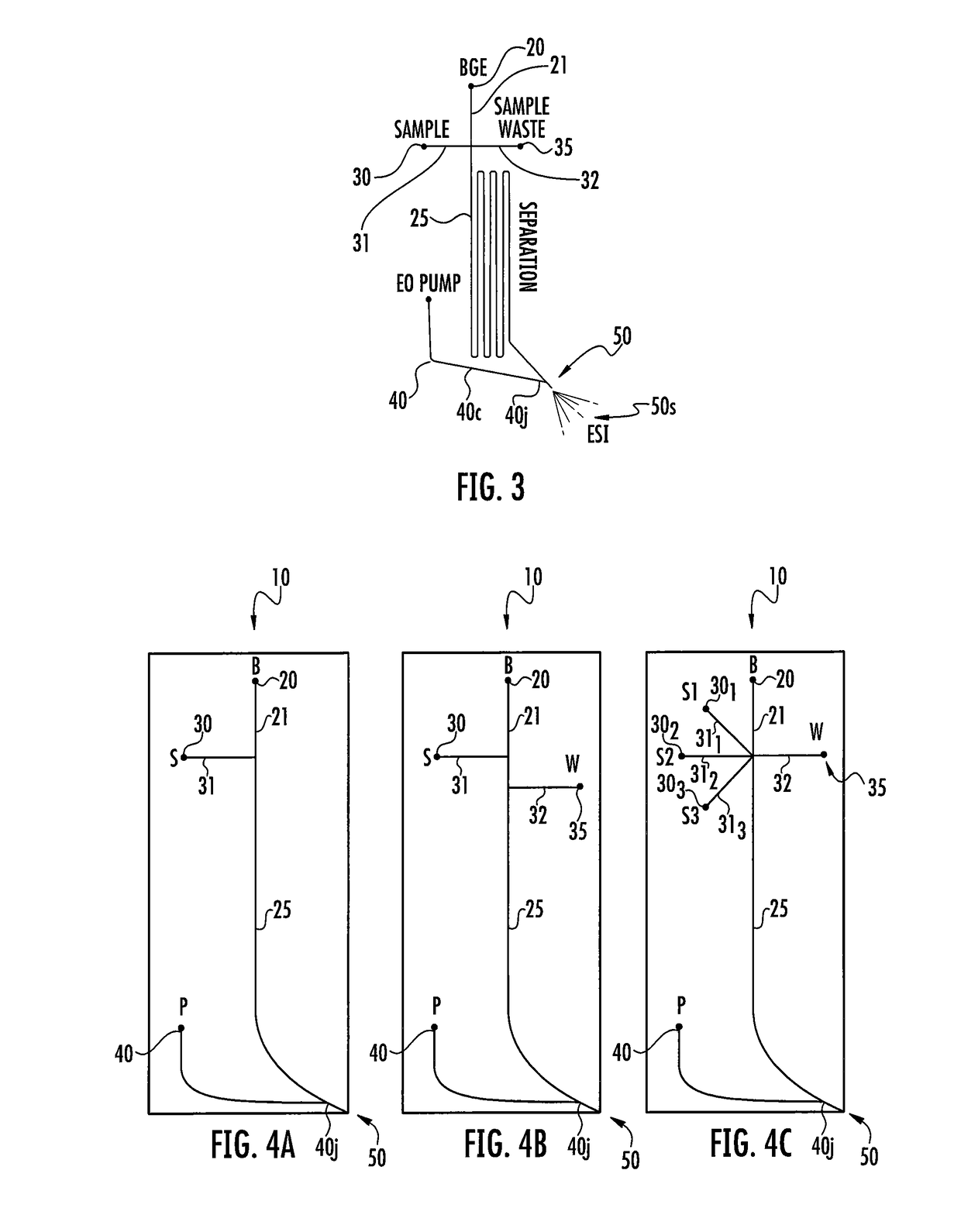Pressure driven microfluidic injection for chemical separations
a microfluidic injection and chemical separation technology, applied in particle separator tube details, instruments, laboratory glassware, etc., can solve the problems of ineffective use of some on-device sample focusing methods and injection bias of microfluidic methods that employ electrokinetic flow of samples into separation channels
- Summary
- Abstract
- Description
- Claims
- Application Information
AI Technical Summary
Benefits of technology
Problems solved by technology
Method used
Image
Examples
examples
[0124]Microchip CE with integrated ESI for MS detection was used for the analysis of amino acids. The new pressure-driven injection method was compared to the commonly used electrokinetic (EK) gate method (using the methodology described in FIGS. 1A-1C and 2A-2C) using the microfluidic device shown in FIG. 3. This type of microchip CE-ESI device has been described previously and is commonly used in lab settings. For all of the data presented here, the sample contained a 10 μM mixture of the 20 essential amino acids. The salt content of the samples was varied to illustrate the superior salt tolerance of the new injection method and also to illustrate the phenomenon of transient isotachophoresis (tITP) that is allowed by the new pressure-driven injection method. All separations were performed with a separation field strength of approximately 1000 V / cm with a background electrolyte (BGE) of 50% methanol, 2% formic acid (pH 2.2). Computer control of voltages applied to the microfluidic ...
PUM
| Property | Measurement | Unit |
|---|---|---|
| pressures | aaaaa | aaaaa |
| pressures | aaaaa | aaaaa |
| pressure | aaaaa | aaaaa |
Abstract
Description
Claims
Application Information
 Login to View More
Login to View More - R&D
- Intellectual Property
- Life Sciences
- Materials
- Tech Scout
- Unparalleled Data Quality
- Higher Quality Content
- 60% Fewer Hallucinations
Browse by: Latest US Patents, China's latest patents, Technical Efficacy Thesaurus, Application Domain, Technology Topic, Popular Technical Reports.
© 2025 PatSnap. All rights reserved.Legal|Privacy policy|Modern Slavery Act Transparency Statement|Sitemap|About US| Contact US: help@patsnap.com



